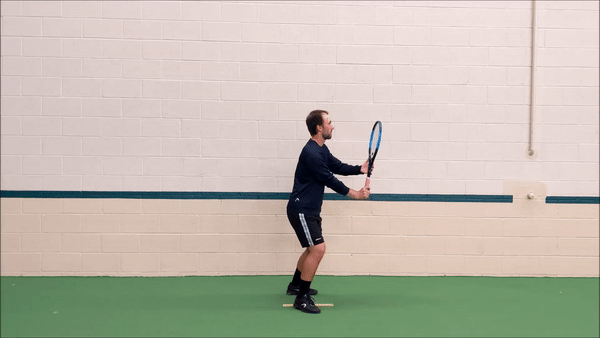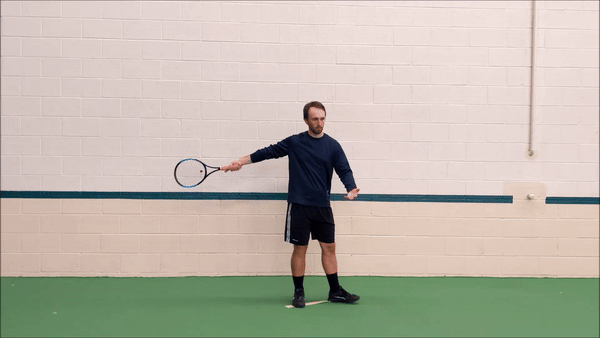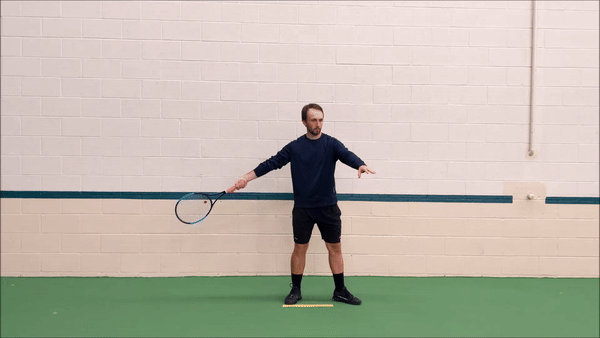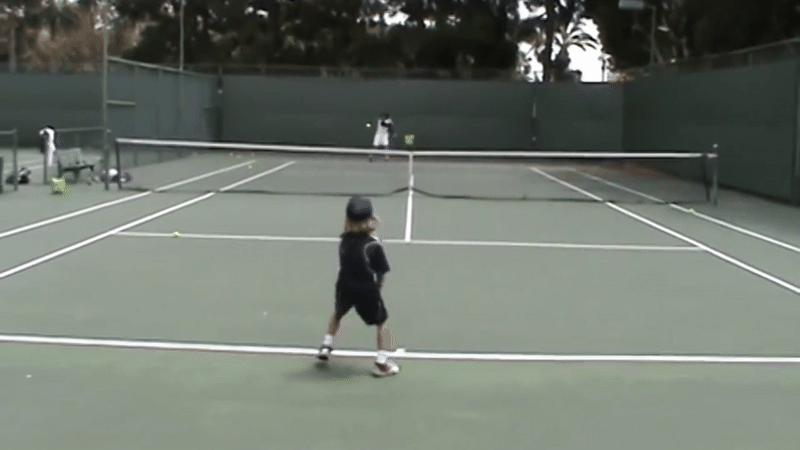The “Little Kid” forehand model (as detailed in a previous article) has several characteristics that differentiate it from an adult swing. This article will outline these characteristics, explain why they are important for adolescents, as well as detail several pitfalls that the LKFM avoids.
Pre-Extended Wrist on Takeback
Explanation: As the player brings the racket back to its rearmost position, they consciously extend their wrist, which remains extended until the post-contact portion of the swing.
Why is this important?: In adult swings, the wrist is sometimes neutral or flexed during the takeback. During the forward swing, the inertial mass of the racket causes it to “lay back,” and move the wrist into extension.

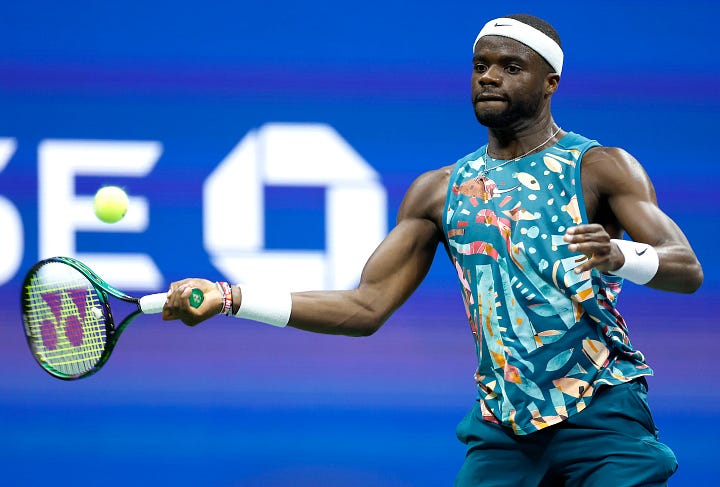
However, because children (especially beginners) do not create similar rotational velocities to adults, their wrists may not extend during the forward swing.
In the forehand, the rapid rotation forward of the trunk and arm will often cause the wrist to be 'laid-back' thus increasing the angular displacement of the racket and placing specific muscles on stretch. You may not see this hand position if the stroke lacks this rapid rotation of the trunk and arm segments (Elliott, Machar, Reid, and Crespo, Technique Development in Tennis Stroke Production, 2009, p. 45).
This presents several potential issues:
At contact, if the player’s hand is in front of the body (as it should be), and the wrist is not extended, the racket would be in line with the forearm, and therefore pointing diagonally to the non-dominant side.
If the player does not extend their wrist, but adjusts the contact point so that the strings are facing the target, the contact point will be directly in line with the shoulders, and to the side of the body.
Looped Backswing
Explanation: During the backswing, the tip of the racket remains above the hitting hand until dropping parallel at the rearmost position, due to the external rotation of the racket arm.
Why is this important?: The looped backswing increases the distance the racket moves during the forwardswing, thus allowing the player to build speed (displacement/time = velocity). Furthermore, Elliott et al. recommend establishing a rhythmic swing in the early stages of development, over a highly-segmented one (e.g. the “ATP type 3 forehand”). Therefore, the racket should not pause during the transition from the rearmost position to the forward swing.
Taking the racket back in this manner, while keeping the non-dominant hand on the throat, also helps create hip/shoulder separation, which is integral to creating rotational power.
Coaches should not allow excessive loop length or height to interfere with the timing of the swing; however, “a moderate loop is certainly acceptable at this early stage of development” (p. 43). This is doubly important if a player is using an adult-sized racket, as the increased mass/swingweight will be otherwise difficult for the player to move effectively.
Racket Head Moving Behind Body & On-Edge Rearmost Position
Explanation: At the rearmost position, the wrist should be extended, the player’s racket on edge, and the hitting-side face perpendicular to the body. The tip of the racket should point behind and to the non-dominant side of the body.
Why is this important?:
If the wrist is extended, the forearm externally rotated (palm up), the upper arm is in line with the shoulders, and the chest is rotated past the hips, then the racket tip should cross the sagittal plane at its rearmost position. Beginning the forward swing from this slot position promotes an efficient transition to the contact point—all the player needs to do is rotate.





Elbow Bend
Explanation: The racket elbow should be bent within 110 to 140 degrees during the forwardswing, and this angle should remain relatively constant throughout the swing.
Why is this important?: A 90* bend puts the upper arm too close to the torso, cramping the swing, and the use of a straight-arm (180*) makes it difficult for young players to effectively maneuver the racket.
Elliott et al., in their book Technique Development in Tennis Stroke Production, recommend that smaller players “reduce their effective upper limb and racket lever length to enhance their ability to rotate” (p. 50). Doing so reduces the moment of inertia to levels manageable for a young child. As players grow, the arm/racket lever can be lengthened by straightening the arm; however, recall that many (if not most) top players have bent elbows during their forehand groundstrokes.
Pre-puberty, the emphasis should be on correct stroke production with the corresponding increases in limb lengths (higher moment of inertia) being matched by an increase in strength post-puberty. Higher levels of rotation may then be emphasized post-puberty, where there is sufficient strength to drive the angular rotation of the longer levers (Eliott et al., p. 50).
Flatter Swingpath
Explanation: In the LKFM, the tip of the racket does not drop significantly below the level of the hands, and the lowest position of the racket hand and tip are slightly below (around 20*) the level of where contact will be.
Why is this important?: Because generating heavy topspin requires internal shoulder rotation, and because children are better at creating horizontal rotational force (around the midline) than vertical, it is recommended that young players “should avoid attempting to hit with very high levels of topspin until their trunk can be activated and their bodies are sufficiently mature to withstand the shoulder loads associated with the upward racket movement” (Elliott et al., p. 97).
The biomotor and developmental literature points to it being more natural to develop horizontal propulsion prior to vertical propulsion (Phillipaerts et al., 2006). In groundstrokes, it's presumably more implicit for children to build forward speed of the racket, prior to then engaging the more upwards body movement needed to hit with 'heavy' topspin (p. 45).
The purpose of the developmental coach is to give young players a swing that’s simple, repeatable, functional, and scalable. In my opinion (and experience), teaching the LKFM gives children the best “tool” for the job.




